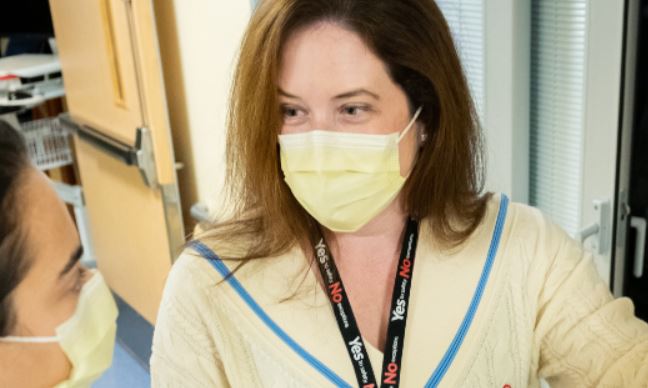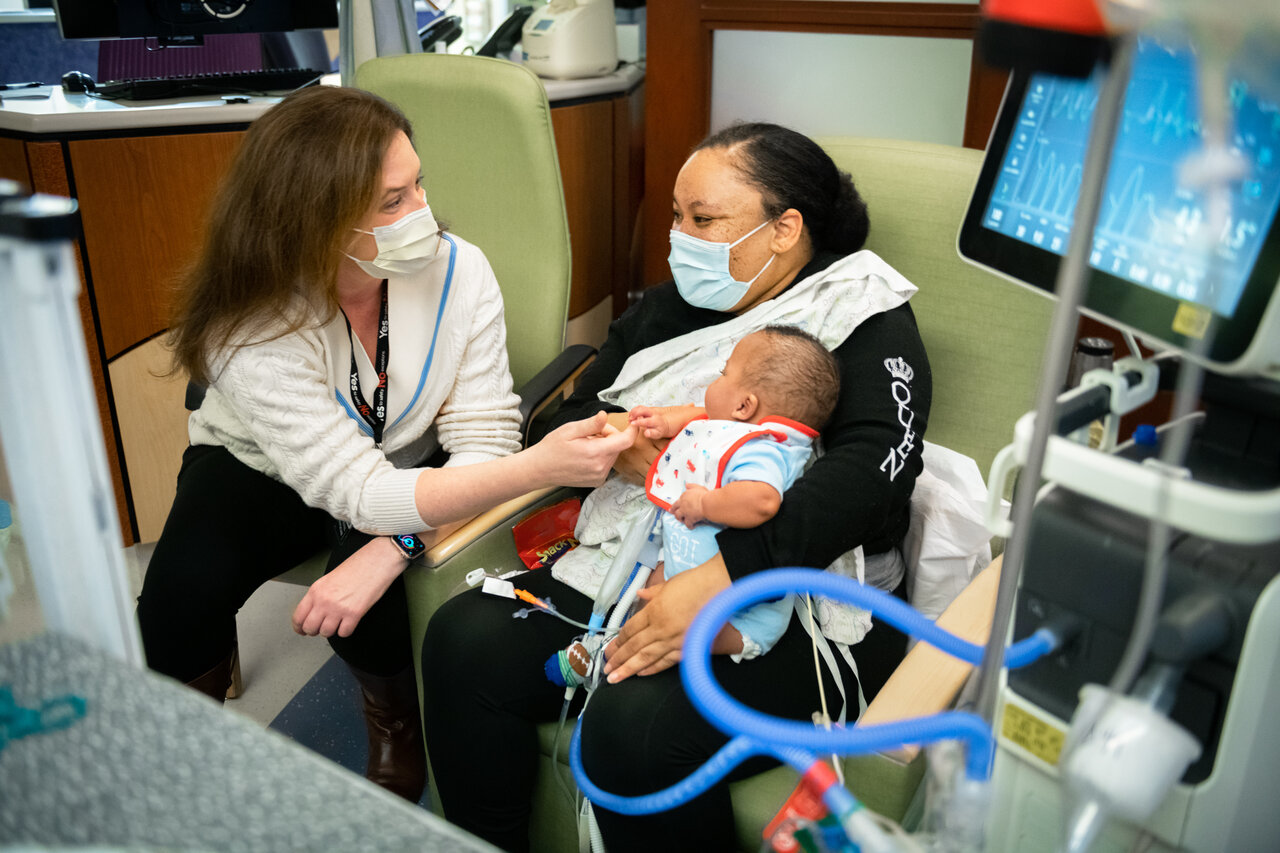Congenital diaphragmatic hernia (CDH) is a complex disease process involving a hole in the muscle that separates the chest from the abdomen. This defect requires a surgical procedure to repair the diaphragm, and also prevents the normal development of the lungs before a baby is born. The combination of the hernia and the abnormally formed lungs frequently results in elevated pressures in the blood vessels of the lung tissue, and babies with CDH and this related pulmonary hypertension face a significant mortality rate. At Children’s Health℠, we created a multidisciplinary CDH team as part of our mission to improve survival for these children.
This team developed a unique CDH algorithm and creates proactive treatment plans that bring together a multidisciplinary team of pediatric experts, including world-class UT Southwestern physicians. The team’s comprehensive approach enables us to forecast the clinical course for a baby with CDH, including the likelihood of critical pulmonary hypertension. These predictions allow the team to plan a safe delivery, create a postnatal care plan that includes surgery, and be prepared to deliver advanced forms of respiratory support such as extracorporeal membrane oxygenation (ECMO).
This care has taken on a new dimension during the COVID-19 pandemic, thanks to an innovative TeleFETAL program that helps us evaluate babies, counsel their families and plan care from afar.
“Whether care starts via TeleFETAL or in-person consultations, our goal is always to evaluate babies with CDH at the earliest possible juncture, deliver outstanding care and keep identifying ways to improve CDH outcomes in our region and nationwide,” says Sushmita Yallapragada M.D., Associate Medical Director of the Children’s Health Level IV NICU and Assistant Professor at UT Southwestern.
An algorithm for congenital diaphragmatic hernia care
Our Fetal Evaluation and Treatment Alliance (FETAL) Center receives CDH referrals from across Texas and beyond. With each referral, a member of our team quickly communicates with the referring physician and convenes a group of physicians – including a pediatric surgeon, a neonatologist and an ECMO team representative – to discuss the case. A geneticist, child life specialist, palliative care specialist, social worker and/or a pediatric psychologist may also be involved. This team discusses the case and maps out care options based on our CDH algorithm that outlines lab schedules, delivery guidelines and postnatal management strategies.
“We tailor care very specifically to each baby and our academic affiliation with UT Southwestern gives families access to some of the world’s best pediatric subspecialists, so babies with CDH can get all the care they need under one roof,” Dr. Yallapragada says.
During the team’s first meeting, one key goal is to assess the baby’s risk for pulmonary hypertension. Our team uses fetal imaging to place each CDH case into one of three categories:
A baby who is low risk for pulmonary hypertension and will likely have a good outcome (these infants have a much higher survival rate)
A baby who is at moderate risk for pulmonary hypertension and may or may not need advanced therapies to support their lungs
A baby who is at significant risk for pulmonary hypertension and more likely to require ECMO therapy for survival
Telehealth expands family consults
Traditionally, our team has met with families in-person in our FETAL Center to explain the baby’s condition, their risk of pulmonary hypertension and treatment options. When COVID-19 struck, we launched TeleFETAL – a telehealth program that enables virtual meetings between families and our team.
We’ve conducted more than 125 TeleFETAL consults in the past year, with some of the families located hundreds of miles away. Our team presents the conclusions from the collaborative meetings, and families get to meet the physicians, social workers and other team members who will support them throughout treatment.
A referring physician may call and say that parents just left their office with a CDH diagnosis. They're upset and worried and scared. They may live some distance from Dallas, and within days or even hours, we can get our team together to evaluate the case and communicate with that family.
This virtual consultation has brought solace to many families facing a CDH diagnosis.
“Even though we’re not in person, we’ve learned to use TeleFETAL to create a warm, friendly and caring environment where we can answer a family’s questions and prepare them for the journey ahead,” Dr. Yallapragada says.
We stay in close contact with the referring physician at every step, keeping them informed of the family’s decisions and plans. We also often have follow-up imaging done at the family’s local institution.
Managing pulmonary hypertension in babies with congenital diaphragmatic hernia
Babies with CDH are transferred to our Level IV NICU shortly after birth. If the baby is stable, our surgeons frequently repair the diaphragm within a few days. If the baby is experiencing pulmonary hypertension, the surgeons and other specialists develop a multidisciplinary treatment plan to determine the best next step.
When pulmonary hypertension isn’t severe, respiratory support with a ventilator is often sufficient. Blood pressure medications to increase systemic blood pressure can be helpful. Sedation to keep the baby calm and reduce vascular resistance in the lungs has also shown to improve outcomes. Additionally, prostaglandin can keep the ductus arteriosus open and relieve pressure on the lungs.
For some babies with CDH, standard ventilator maneuvers, as well as medications and non-invasive interventions, are not adequate to keep the patient stable. In this setting, there is a discussion about performing a surgical procedure to place the baby on ECMO. ECMO provides additional support and allows the lungs to rest. This critical decision is made after careful consideration by our specialized CDH team.
Children’s Health has been designated a Center of Excellence by the Extracorporeal Life Support Organization, and we’re one of the region’s highest-volume ECMO centers, typically managing 30 to 40 ECMO patients per year.
Monitoring for developmental delays and neurocognitive issues
Each patient continues to receive care tailored to their needs after they go home. Babies will be seen by the pediatric surgeons to ensure a good outcome after the operation. Our THRIVE Program also follows these babies long-term. The program monitors them for developmental delays and neurocognitive issues, so we have the ability to step in and offer appropriate interventions.
“Our CDH care is just the latest example of our decades-old commitment to finding ways to improve care for even the most complex pediatric conditions,” says FETAL Center Medical Director June Hu, M.D., pediatric neonatologist and Assistant Professor at UT Southwestern. “We do our best to give every baby the best possible chance at a happy, healthy childhood.”
Learn more about innovative neonatal care and research at Children’s Health


